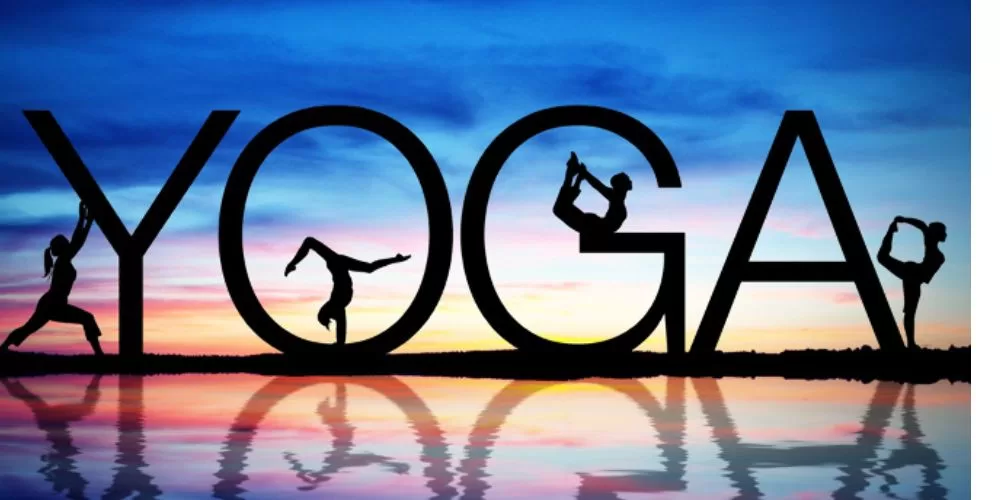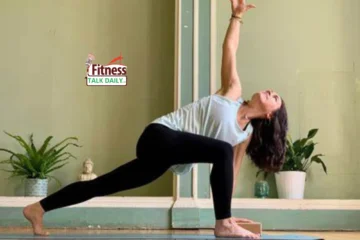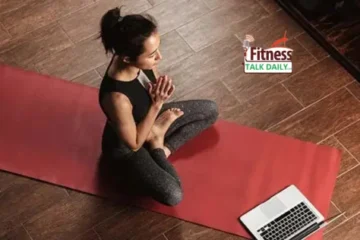Sport Yoga integrates the philosophy of yoga with sports training to improve strength, flexibility, balance, mental concentration, and overall sporting performance. In this blog, we will discuss the idea of Sport Yoga and look at some useful tips on how to integrate yoga into your sports conditioning program.
Learn how this integrated approach can benefit athletes of all levels by enhancing their physical skills, avoiding injuries, and maximizing their sporting potential.
What is Sport Yoga?
Sport Yoga is the application of yoga principles, techniques, and postures into sports conditioning and athletic training. It integrates the physical and mental advantages of yoga with the unique requirements of sports performance. Sport Yoga emphasizes increasing strength, flexibility, balance, breath control, and mental concentration to enhance overall athletic performance.
Sport Yoga also differs from normal yoga practices as it specializes yoga techniques for addressing the specific demands of sportsmen and women for their particular sport. It might involve dynamic asanas to enhance strength and flexibility, focused breathing exercises to support endurance and command, and mind training practices to enhance mental alertness and visualization. Sport Yoga can be specifically designed for multiple sports, among others, including team sports, individual sports, and endurance activities.
Athletes can benefit from enhanced physical fitness, decreased risks of injuries, greater body awareness, improved mental toughness, and overall enhanced performance on and off the field by integrating Sport Yoga in their training regimen. It provides a balanced method of sports conditioning that integrates the physical and mental factors to maximize athletic potential.
Understanding the Concept and Benefits
Sport Yoga is a practice that unites the ancient philosophies of yoga with the particular requirements of sports and athletes. It entails modifying yoga methods and positions to enhance strength, flexibility, balance, mental acuity, and athletic performance overall.
One of the fundamental principles of Sport Yoga is the synchronization of breath and mindfulness. Sports people learn to coordinate the breath with movement, enhancing oxygenation, relaxation, and mental acuity during training and competition. By being mindful, athletes can stay present, concentrate, and be attuned to their body, resulting in enhanced performance and minimized chances of injury.
The advantages of Sport Yoga are numerous. It increases flexibility, which is instrumental for avoiding sports injuries and maximizing athletic motion. A boost in strength and stability achieved in yoga poses can enhance overall power and efficiency in sporting activities. Sport Yoga also helps to facilitate good body awareness, balance, and coordination, allowing athletes to move with accuracy and control.
Yoga Asanas for Increasing Strength and Flexibility
Yoga provides numerous asanas (poses) that can be effective in building both strength and flexibility. Adding these poses to your routine can assist in developing muscle tone, range of motion, and functional strength. Some of the most important yoga asanas that work on strength and flexibility are:
- Downward Facing Dog (Adho Mukha Svanasana): This asana builds the upper body, such as arms, shoulders, and core, while stretching hamstrings and calves.
- Warrior II (Virabhadrasana II): Warrior II pose works the legs, hips, and core, strengthening the lower body and loosening the hips.
- Plank Pose (Phalakasana): Plank pose is an excellent full-body exercise that tones the arms, shoulders, core, and legs and also boosts overall stability.
- Triangle Pose (Trikonasana): Triangle pose extends and strengthens the legs, hips, and side body, opening the hips and creating flexibility and stability in the region.
- Bridge Pose (Setu Bandhasana): Bridge pose tones the glutes, hamstrings, and lower back, opening the chest and shoulders.
- Chair Pose (Utkatasana): Chair pose engages the quadriceps, glutes, and core, enhancing lower body strength and stability.
- Cobra Pose (Bhujangasana): Cobra pose tones the back muscles, arms, and shoulders, as well as opening the spine.
- Standing Forward Fold (Uttanasana): Standing Forward Fold stretches the hamstrings, calves, and lower back and encourages flexibility of the posterior chain.
- Boat Pose (Navasana): Boat pose is a core engage, enhancing the strength of the abdomen and improving balance.
- Extended Triangle Pose (Utthita Trikonasana): Extended Triangle pose fortifies the legs, extends the sides of the body, and enhances hip flexibility.
Practice these asanas with alignment and then increase the duration and intensity as your flexibility and strength build up. It is important to listen to your body and adjust the poses as necessary. Regularity and regular practice will give the best results in building both strength and flexibility with yoga asanas.
Breathing Techniques for Endurance and Control
One useful method is deep belly breathing, where you breathe in through your nose fully, inflating your belly, and breathe out through your mouth fully. This maximizes the intake of oxygen and elimination of carbon dioxide and enhances stamina.
Another method is rhythmic breathing, where you coordinate breathing with movements. Take a breath when you’re entering the preparatory phase of a movement and exhale as you exert effort during the exertion phase. This ensures that oxygen supply remains continuous, enhancing performance.
By incorporating these breathing techniques into your workouts or sports activities, you can enhance endurance, reduce fatigue, and stay focused throughout your performance.
Mindfulness and Visualization: Mental Conditioning through Yoga
Mindfulness and visualization are powerful mental conditioning techniques utilized in yoga to enhance performance and focus.
Mindfulness is being present at the moment, observing sensations, thoughts, and feelings without judgment. This fosters an enhanced level of awareness, which allows athletes to maintain focus on their movements and environment during sporting activities.
Visualization, by contrast, is a method through which athletes psychologically envision themselves doing certain skills perfectly or accomplishing their objectives. Through vivid envisioning of desired results, players activate neural patterns and reinforce muscular memory, contributing to enhanced performance.
When merged, visualization and mindfulness form an invincible mindset that enables sportspersons to remain calm, minimize distractions, and deliver their best performance. By training the mind to remain present and visualize success, sportspersons can triumph over adversity, handle stress, and deliver optimal performance.
Designing a Yoga Routine for Sport Conditioning
Developing a sports conditioning yoga program can serve to augment an athlete’s training protocol. Below are some guidelines in developing a specific yoga program designed to improve sporting performance:
- Select areas of specific need: Examine the requirement of your sport and determine in which areas it may be assisted by yoga. As a case in point, if you play running sports, you may include flexibility, strengthening of the leg, and enhancing hip mobility.
- Warm-up: Start with a dynamic warm-up routine to enhance blood circulation, warm up muscles, and get the body ready for movement. This may involve gentle stretches, mobilization exercises of the joints, and rhythmic breathing.
- Asana selection: Select yoga asanas that work on the muscles you’ve already identified. Include asanas which increase strength, flexibility, balance, and core stability as applicable to your sport. Have a balanced approach, working on the dominant and non-dominant sides of the body.
- Sequencing: Arrange the asanas in a coherent sequence, smoothly transitioning from one pose to the next. Begin with easier poses and gradually move towards more difficult ones. Add variations or modifications if necessary.
- Breath focus: Highlight synchronized breathing throughout the practice. Breathe in on opening or lengthening movements and breathe out on contraction or release movements. Suggest deep, diaphragmatic breathing to oxygenate the body and induce relaxation.
- Core integration: Incorporate poses that involve and strengthen the core muscles, since a strong core is central to stability and power in most sporting activities.
- Cooling down: Finish the session with a light cool-down, incorporating relaxation poses and stretches aimed at the muscles engaged during the training. This reduces muscle tension, facilitates recovery, and restores the body to a balanced state.
- Practice regularly: Consistency is the key. Try regular sessions of yoga, preferably 2-3 times a week, to avail its benefits and note improvements in your sports performance with time.
Yoga tailored to various sports and athletes
Yoga can be tailored to address the individual requirements and needs of various sports and athletes. Here are some pointers for tailoring yoga practices:
- Specific demands identification: Recognize the physical requirements of the sport and the most activated or at-risk areas of the body. For instance, runners can train the hip and hamstring flexibility, and basketball players may train for core strength and equilibrium.
- Targeted asanas: Choose yoga poses that target the sport’s specific needs. For example, swimmers can include poses that build shoulder strength and control breathing, while golfers can focus on hip rotation and spinal mobility.
- Frequency and timing: Plan the correct timing and frequency of yoga practice depending on the training schedule of the sport. It is possible to include brief sessions of yoga in the warm-up or cooldown periods for certain sports, or others can include a specific set of sessions involving yoga training.
- Breath control practices: Incorporate certain pranayama (breathing) practices that support the demands of the sport. Endurance sports athletes may work on deep diaphragmatic breathing to increase endurance, while high-intensity sports athletes may utilize breath control practices that encourage concentration and relaxation.
- Mental conditioning: Integrate mindfulness and visualization practices to support mental toughness and focus on the performance of sport. Tailor-made practices allow athletes to remain present, balance stress, and visualize achievement within their particular sport.
- Individualized adaptations: Include adaptations and substitutions of poses in order to tailor the practice for individual athletes’ strengths, abilities, and physiques. The practice is kept accessible and impactful for each athlete.
- Progression and adaptation: As the athletes build up their yoga practice, gradually add more demanding poses or variations to keep challenging them to grow and get better. Modify the practice along with athletes’ changing needs and objectives.
- Expert consultation: Take advice from experienced yoga teachers or sporting coaches who specialize in tailoring yoga for particular sports. They can offer insight and create specially designed programs fitting athletes’ requirements.
By modifying yoga exercises to accommodate various sports and players, one can improve their physical performance, minimize the chances of injury, and optimize their overall performance in the preferred sport




